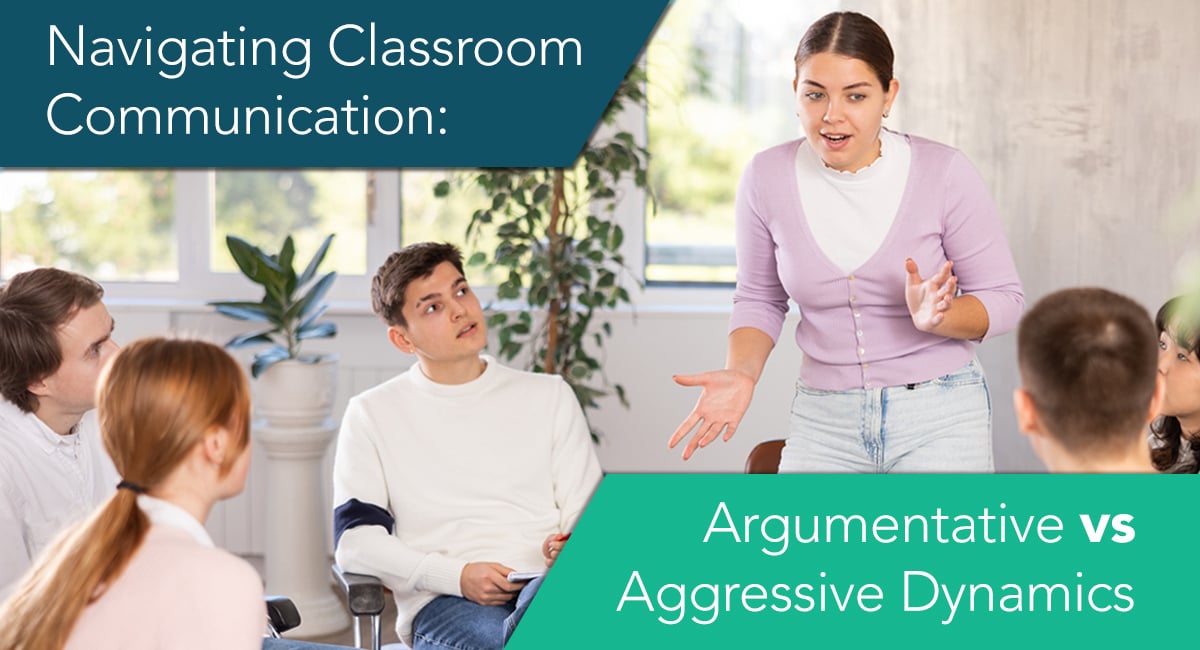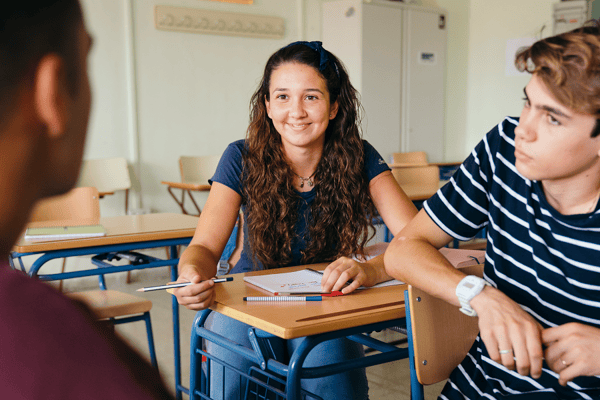
Communication dynamics between educators in the realm of education, the art of constructive argumentative communication is crucial for the holistic development of students. This form of communication is not solely based on the ability to articulate viewpoints but hinges on a combination of cognitive development, environmental influences, and emotional intelligence. As students navigate the intricate landscape of ideas and discussions, their capacity to engage in reasoned debate depends on critical thinking, problem-solving skills, the presence of positive role models, an encouraging classroom ambiance, and a keen sense of both empathy and self-awareness. Each of these components plays an integral role in shaping a student's ability to communicate their perspectives in a constructive, respectful manner. and students can profoundly influence the classroom environment. As professionals dedicated to nurturing future generations, understanding these dynamics becomes imperative. It's not just about conveying information - it’s also about fostering a positive atmosphere conducive to growth and exploration. Communication researchers have articulated the nuanced distinction between argumentative and aggressive communication and for educators, understanding this distinction is crucial. A deeper exploration of their findings can help educators refine their communication style to foster vibrant, effective classrooms.
Understanding the Spectrum: Argumentative to Aggressive Communication
The Power and Potential of Argumentativeness
Is argumentativeness a negative method of communication? No. It’s actually the opposite. Argumentativeness is positive and should be embraced. Argumentativeness isn’t about sparking unnecessary confrontations. Instead, it is a communication style where individuals strategically challenge, dispute, or advocate certain points of view to find mutual understanding. In the context of a classroom, it's a golden opportunity for learning or building trust and rapport between teacher and student. Teachers might be argumentative when they encourage critical thinking or debate; they challenge students to support their assertions with evidence, fostering a dynamic intellectual environment. Students may challenge each other or the teacher as well. All around, argumentativeness can be highly constructive, but balance is needed. If overdone, students might perceive it as confrontational rather than intellectually stimulating, potentially leading to resistance or disengagement.
When facilitated correctly in a classroom, argumentativeness can:
- Foster a dynamic intellectual environment.
- Encourage students to support their views with evidence.
- Stimulate critical thinking and debate.

As students navigate the intricate landscape of ideas and discussions, their capacity to engage in reasoned debate depends on a host of factors. Each of these components plays an integral role in shaping a student's ability to communicate their perspectives in a constructive, respectful manner.
Cognitive Development
- Critical Thinking Skills: Children who've developed critical thinking are more likely to engage in argumentative communication.
- Problem-Solving Abilities: Being able to see different sides of an issue and articulate viewpoints is key to argumentative communication.
Environmental Influences
- Positive Role Models: Exposure to adults who model respectful debate and inquiry encourages argumentative communication.
- Encouraging Classroom Atmosphere: A classroom that values questioning, exploration, and respectful disagreement fosters argumentative dialogue.
Emotional Intelligence
- Empathy: Understanding others' feelings promotes constructive dialogue.
- Self-awareness: Recognizing and managing one's emotions can steer communication from aggressive to argumentative.
The Dangers of Verbal Aggressiveness
On the other end of the communication spectrum lies verbal aggressiveness, a more harmful, destructive communication style, characterized by:
- Personal Attacks: Instead of critiquing ideas, the focus shifts to attacking a person's self-worth, which can be deeply damaging, especially for younger students still forming their self-identity.
- Erosion of Trust: In classrooms marred by verbal aggressiveness, mutual respect dwindles. Students become less likely to participate, share opinions, or seek clarifications, leading to stifled learning experiences.
- Intending to inflict psychological harm or distress.
- Using language that's dismissive, belittling, or unduly sarcastic.

For a student on the receiving end, such communication is damaging. Not only does it affect their academic confidence, but it can also hinder their overall well-being. In such an environment, open dialogue and mutual respect take a back seat, replaced by defensiveness and strained relationships. This situation is genuinely counterproductive.
While educators are more self-aware and attune to avoiding this destructive communication style, students that engage in verbal aggressiveness may have a poor awareness of why they are engaging in such communication. Verbal aggressiveness from students can be rooted in several factors:
- Emotional Triggers:
- Frustration: If a child feels frustrated or overwhelmed, they may respond aggressively.
- Fear or Insecurity: Feelings of threat or vulnerability can lead to defensive aggressive behavior.
- Unmet Needs: Whether attention, validation, or support, unmet needs can trigger aggressive reactions.
- Environmental Factors:
- Modeling: Children may mirror aggressive communication patterns they observe at home or in media.
- Peer Pressure: Sometimes, the classroom culture or peer influences might reinforce aggressive behavior.
- Lack of Structure: A classroom lacking clear rules or expectations might contribute to aggressive communication.
- Developmental Aspects:
- Limited Vocabulary: Young children may lack the words to express complex emotions, leading to aggression.
- Impulse Control: Developing self-control takes time, and some children may impulsively resort to aggressive communication.
For educators, the faster they can identify the factors driving verbal aggressiveness, the sooner they can be addressed to help both the student and the classroom community have productive learning experiences. Verbal aggressiveness negatively affects students' academic and emotional well-being, and educators must acknowledge that while adults may better control it, students may not be aware of their aggressive tendencies. Educators need to be empathetic, observant, and proactive, providing guidance, structure, and support to lead students away from harmful communication and towards constructive, respectful dialogue.
Seven Strategies to Promote Healthy Communication
Effective communication is an ongoing endeavor. Below are a range of factors that educators can explore to enhance both classroom communication and their own communication skills.
- Educator Training: Teachers can benefit from professional development to recognize and manage different communication styles.
- Classroom Rules and Culture: Establish a respectful and curious classroom culture that encourages argumentative over aggressive communication.
- Parental Involvement: Parents and guardians play a vital role in modeling and reinforcing positive communication.
- Utilizing Technology: IT and EdTech tools can be used to facilitate respectful dialogue and collaboration as well as promote a sense of safety and support.
- Social Emotional Learning: Implement Social Emotional Learning strategies throughout the school and classroom to help students gain emotional awareness, empathy development, effective listening, conflict resolution skills, and self-awareness skills to become effective communicators.
- Seek Peer Feedback: Sometimes, an external perspective can offer the most accurate insights. Collaborative sessions where educators observe each other and offer feedback can be incredibly enlightening.
- Engage with Students: Periodically survey students or have open discussions about the classroom environment to gain direct insights into how communication strategies are being received. After all, students are the primary recipients of these efforts.

The Endgame of Effective Communication
Communication in the classroom is multifaceted. For learners, it’s an unwittingly complex interplay between emotional, environmental, and developmental factors. Recognizing why a child might exhibit aggressive versus argumentative communication is essential for educators and parents alike. By understanding these dynamics and implementing strategies to encourage healthy communication, educators can guide children toward a more empathetic, constructive, and engaging way of expressing themselves. More importantly, they will become lifelong effective communicators. Effective communication is a key goal in education, essential for success in most aspects of life.
To explore solutions that can optimize communication opportunities in the classroom, click here: FrontRow.




